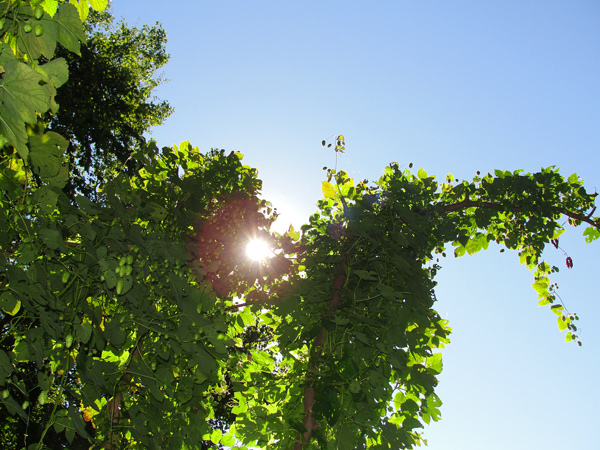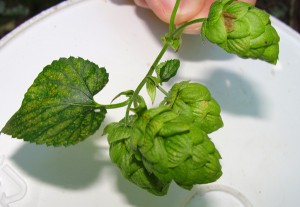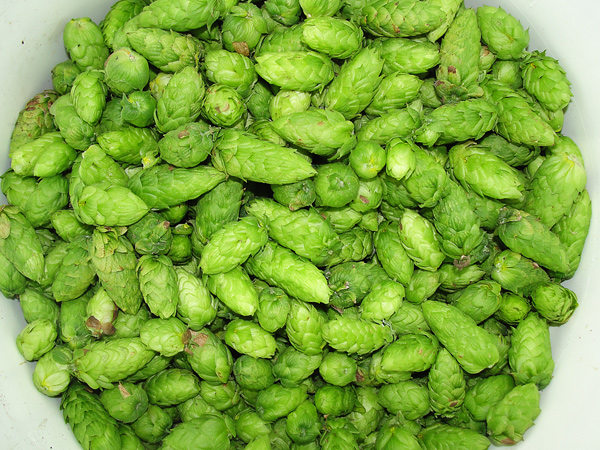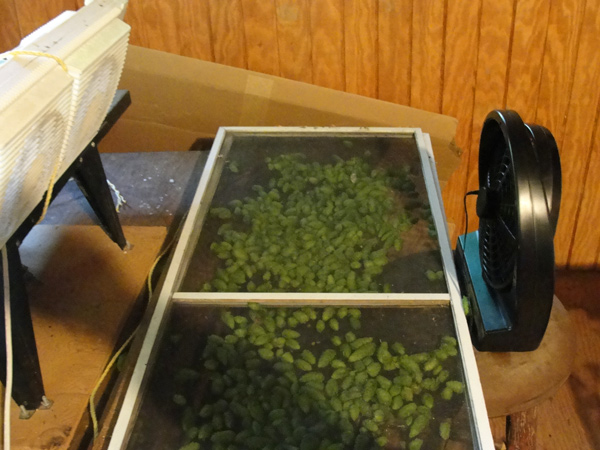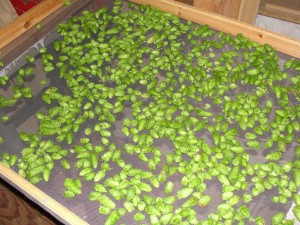Homegrown Hop Harvest
No other plant produces a more beautiful crop for the beer lover than the Humulus Lupulus or Hop plant. Each season starts around May or June around my house, where the hearty hop plant breaks the ground’s surface and begins it’s ascent up the fence of my old dog kennel and beyond. I used to create elaborate structures of string and boards, but I’ve found out of laziness that cutting up a tall fallen tree and tying it up vertically seems to make for the best trellis.
CARE
During dry spells I do make the effort to water the plants daily in the summer, but mostly the vines take care of themselves. With a good fertilizer on the base and maybe a little trimming after they’ve grown a few feet- you’re good to go. The trimming consists of letting the plants grow a few feet and really looking for the strongest vines, then I cut back a bunch of the weaker vines so the plant’s energy focuses on the main vines. Sometimes I’ll point the ends of the growing plant in the direction I’d like it to grow, and during peak growing, the plant latches on within a few hours and continues it’s climb in a new direction. That is one of my favorite parts of growing hops, seeing the growth within hours, not days, during peak growing.
THE GUARDIANS
I’ve read many articles about hop growing and one of the biggest issues that people have are insects eating their plants. A few bugs like aphids, caterpillars and spider mites would love nothing more than to eat your precious plants. There are a number of remedies for theses problems like spraying with insecticides, garlic oil, and detergents. Fortunately for me, I have a powerful ally in the protection of my hops. The spiders.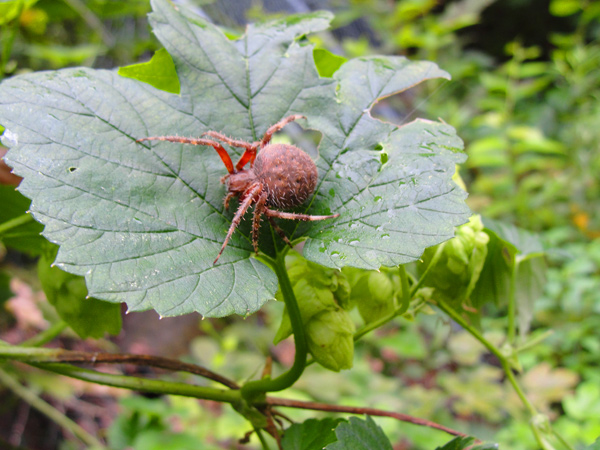
My plants are guarded by some of the baddest eight legged creatures you have ever seen. Brown ones, black ones, big ones, small ones. Every time I’ve seen destruction of a section of a plant, my favorite garden predators soon resolve the problem. Spiders set up shop and consider my infestation their own personal buffet. It’s fascinating to watch. All summer long this battle takes place and I love it – that is until harvest time. Then I have to personally get in the fray.
Harvest day is always an event. Some people do multiple harvests, but I just get it done in one day. Long pants, a long sleeve shirt and maybe some vinyl gloves make up my outfit. The clothing is necessary because the prickly vines that cling tend to irritate my skin. Harvesting hops is not for the weak of heart. The spiders I mentioned before are around every corner, not to mention some of the visitors like this toad I found hanging out at the base of my plants. There’s nothing really pretty about harvesting hops, just pick off the cones and dump them in a bucket. They should have a papery feel and smell very fragrant.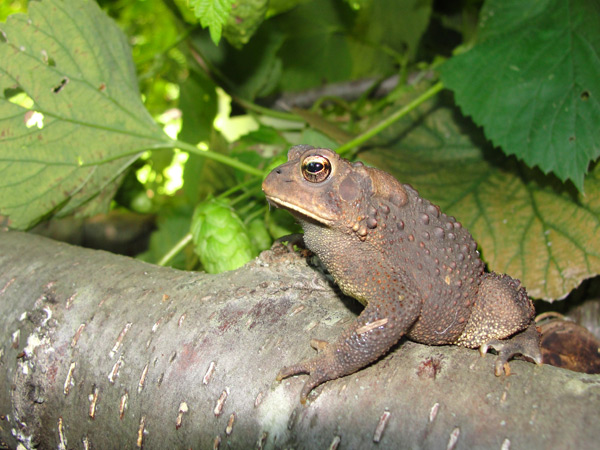
DRYING
I try to keep my buckets of hops separated by plant since I’m not quite sure of the variety of my different plants.
SIDE NOTE: My hops are either East Kent Goldings, Fuggles or Cascades. Long story short, but my plants came from my father who got them from the University of Oregon back in the seventies. He has since long forgotten what types they where. So we know what they COULD be, but are not sure exactly what they are.
Before I vacuum seal up my hop crop I like to dry them as much as possible. An old window screen and a couple of fans do the trick for me. The hops are spread out and set to dry for about a day and a half. Then I use a food sealer to bag up the crop. I always try to brew a “Harvest Ale” with the freshest hops and the rest go in the freezer. My homegrown hops are used for flavor or dry hop additions in my recipes, this is because I do not know the alpha acids of my crop and I’m not quite sure of the variety. So I just go with smell and flavor.
CONCLUSION
I hope this is helpful for some folks interested in growing their own hops. Keep it simple. Growing hops is just a fun addition to the brewing hobby. There are other benefits to growing hops; I like to use my hop vines for decorations and in label designs sometimes. Get yourself some bines (roots), throw them in the ground and watch them grow like weeds. (Oh yeah, hops are a relative of weed as in marijuana, but that’s another blog post.) If you have any questions feel free to ask, I’d be happy to share what I know. I’m also going to include a few links that I’ve found helpful for growing hops. Sláinte.
Ben
Helpful Links
Hop Descriptions – http://www.freshops.com/hops/variety_descriptions
Growing – http://beersmith.com/blog/2008/04/10/growing-hops-in-the-garden-how-to-grow-beer-hops/
